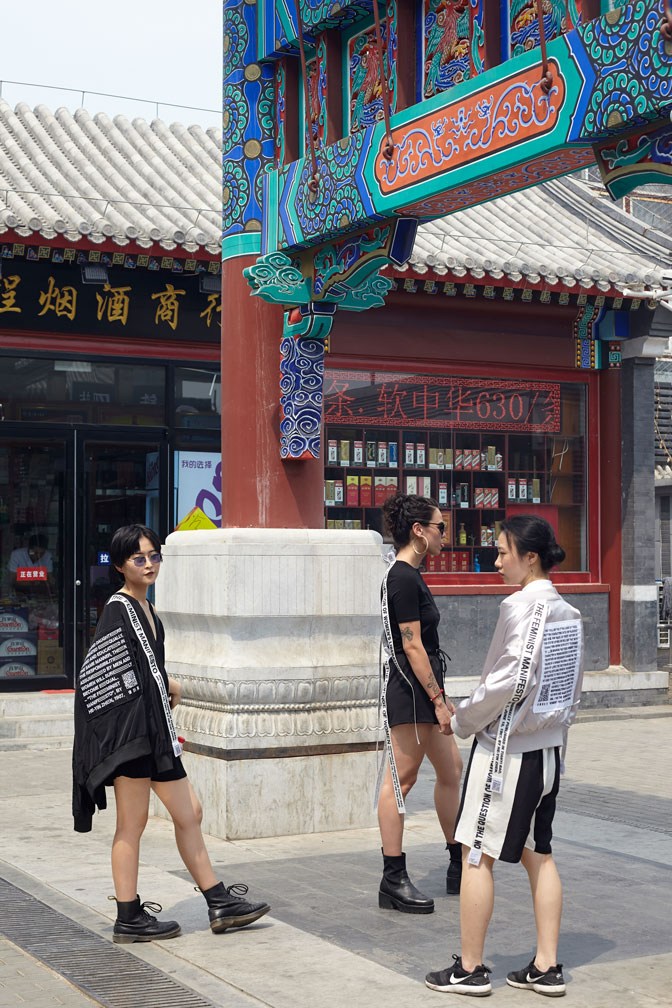Thunderclap
2017

What: ‘Thunderclap’ is a steganographic zine, that piggybacks on fashion accessories to publicly distribute the suppressed writings of Chinese anarcho-feminist, He-Yin Zhen (1886-1920).
Where: Project realised during artist-in-resident programme at I:projectspace, Beijing, China
When: March - May 2017
Thunderclap employs steganography to publicly redistribute the suppressed work of Chinese anarcho-feminist He-Yin Zhen (1886–1920) through the medium of clothing accessories...
[Content continues unchanged]
[Content continues unchanged]
Related press: interview with China Residencies, Glamcult, and WEAI – Columbia University.
Photography: Jeff Yiu
Models: Zhuxin Wang, Tu Lang, Amelie Kahn-Ackermann



















